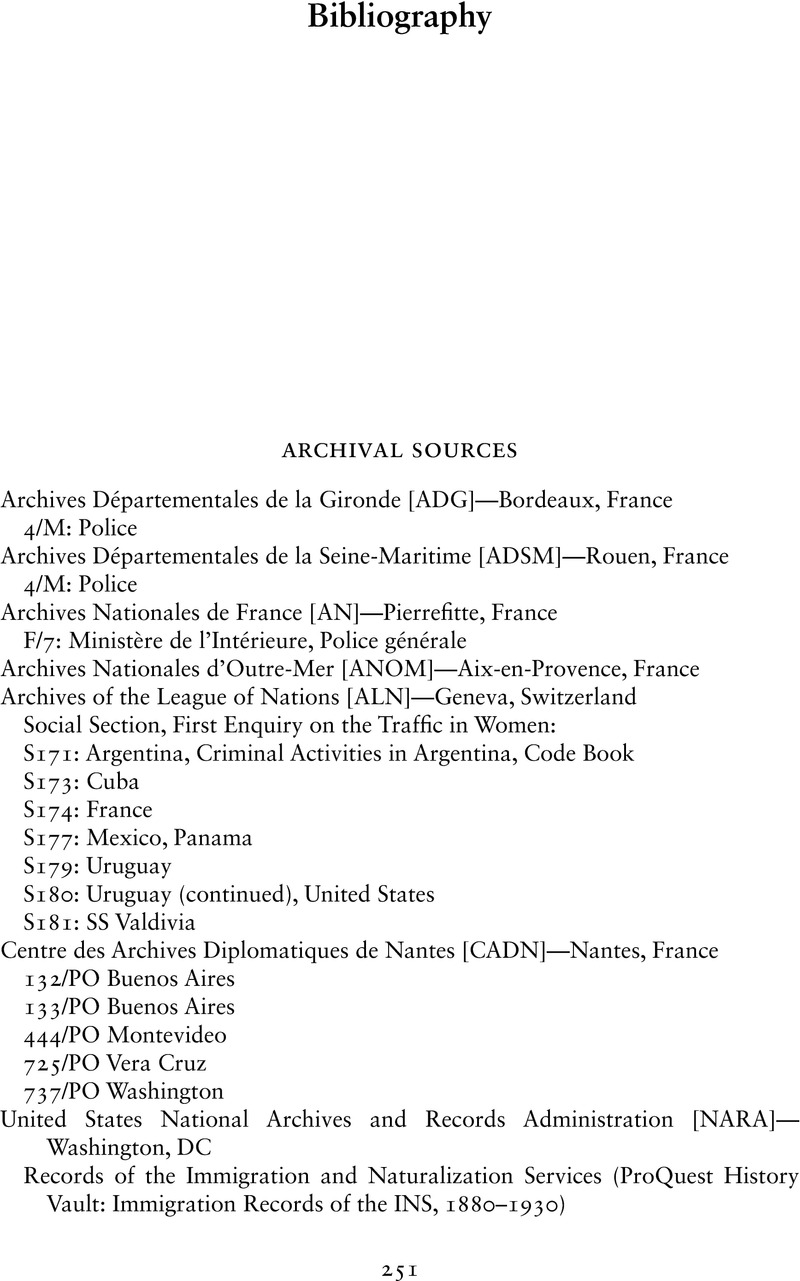Book contents
- Selling French Sex
- Selling French Sex
- Copyright page
- Dedication
- Contents
- Figures
- Acknowledgments
- Note on the Text
- Abbreviations
- Introduction
- 1 The French Paradigm
- 2 Desiring Undesirable Women
- 3 Coercion and Choice
- 4 The Gender of Identity Documents
- 5 Rejecting Honest Work
- 6 Reputation and Repatriation
- Conclusion
- Bibliography
- Index
- References
Bibliography
Published online by Cambridge University Press: 04 January 2024
- Selling French Sex
- Selling French Sex
- Copyright page
- Dedication
- Contents
- Figures
- Acknowledgments
- Note on the Text
- Abbreviations
- Introduction
- 1 The French Paradigm
- 2 Desiring Undesirable Women
- 3 Coercion and Choice
- 4 The Gender of Identity Documents
- 5 Rejecting Honest Work
- 6 Reputation and Repatriation
- Conclusion
- Bibliography
- Index
- References
Summary

- Type
- Chapter
- Information
- Selling French SexProstitution, Trafficking, and Global Migrations, pp. 251 - 276Publisher: Cambridge University PressPrint publication year: 2024



